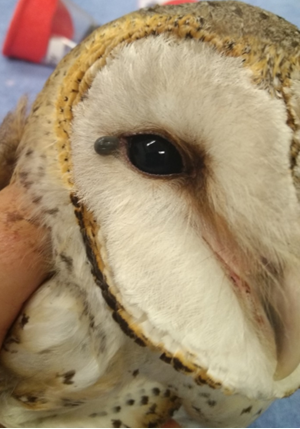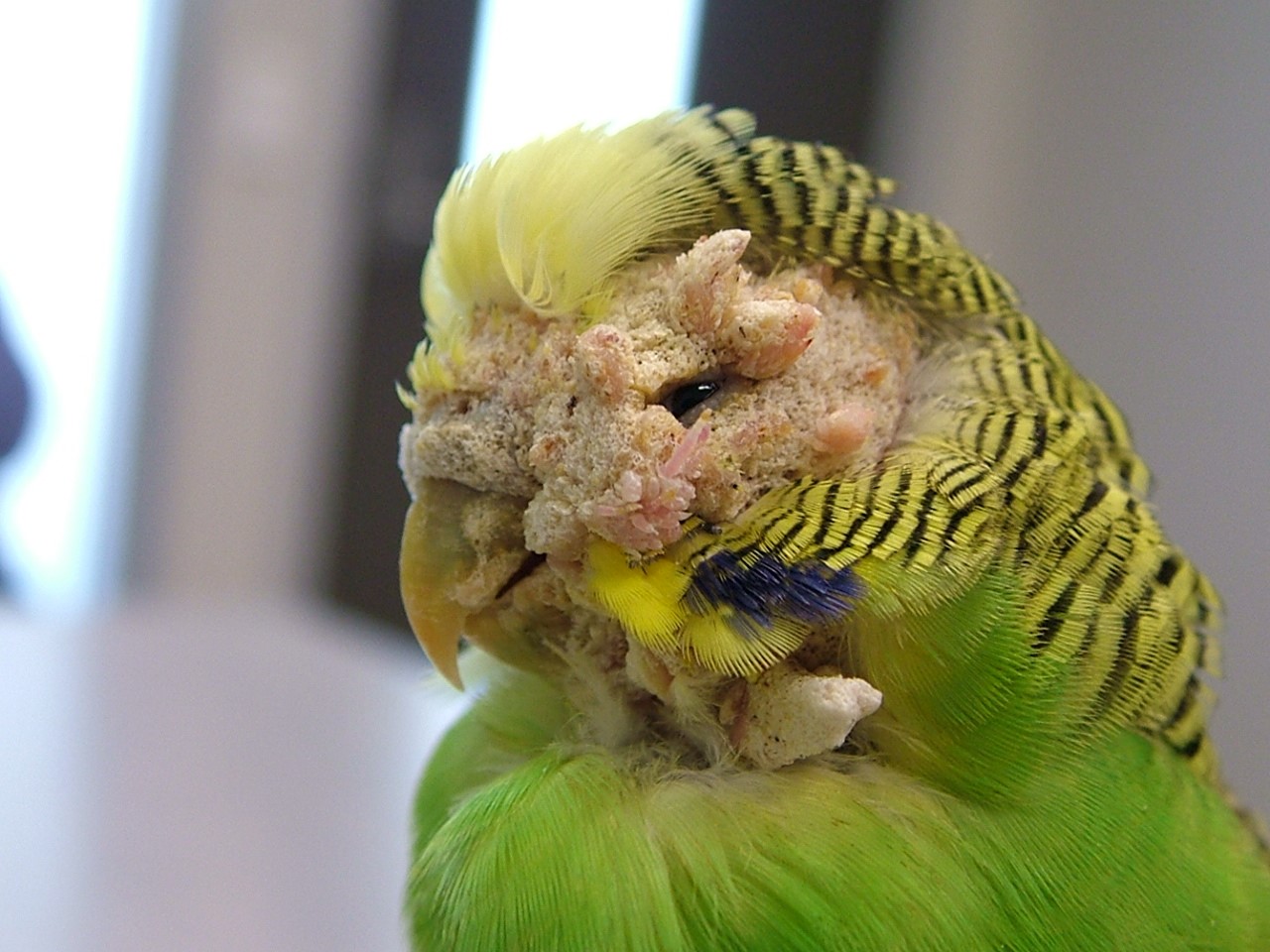Birds can carry a large number of external parasites (ectoparasites) – fleas, ticks, mites, and lice. This isn’t as common as people sometimes appear to believe and is greatly overrated (over-treated) as a cause of feather damaging behaviour and feather loss. See these articles for more information on feather damaging behaviour and feather loss:
- How can I keep my birds entertained, alert, and interested in their environment?
- How do I socialise my new bird with other birds?
- Why do birds chew and pull out their feathers?
The most common external parasites are:
- Lice – small biting insects that live on the feathers. Some of them are thought to be harmless, others can cause irritation and feather loss.
- Mites – small, eight-legged arthropods that can live on the skin (e.g., the Red mite) or in the skin (e.g., Scaly Face mite). Some (the quill mites) live in the feather shaft and weaken it, causing it to break.
- The poultry Stick-Fast flea is occasionally seen on the combs and wattles of backyard poultry and can transfer to other bird species if housed together.
- Paralysis ticks are occasionally found not only on wild birds, but also ducks and geese. They can cause paralysis in birds, similar to that seen in other companion animals.
Diagnosing the presence of mites is usually straightforward – simple visual inspection is usually enough. Red mites can be difficult to find, as they usually disappear off the bird during the day, re-emerging at night to feed on their blood. Scaly Face mite causes characteristic ‘honeycomb’ crusts on the face, vent, feet, and wings.
Treatment with a pyrethrin spray is usually enough to treat ticks, fleas, and lice. It is best to speak to your avian vet about what product to use.
Mites may require different treatment regimes, and your avian vet is the best person to discuss this with. Several treatments, 2 weeks apart, may be required to completely eradicate these pests.
Routine, year-round treatment is rarely indicated for companion birds housed indoors. Aviary birds and poultry may benefit from spraying with a pyrethrin every 3-6 months (as advised by your avian vet).


Reference
Doneley B (2018) Avian Medicine and Surgery in Practice: Companion and Aviary Birds, 2nd ed. CRC Press
